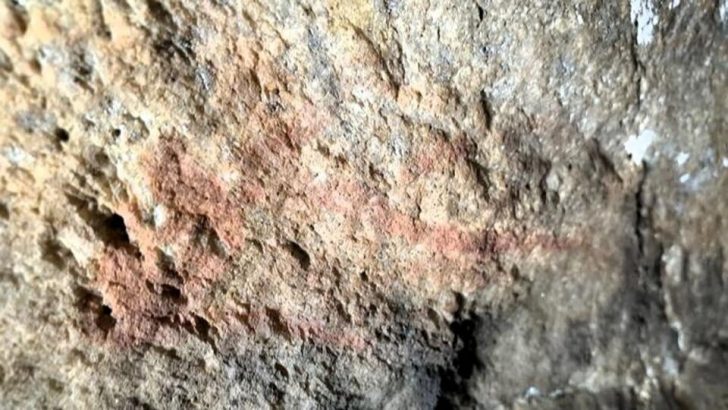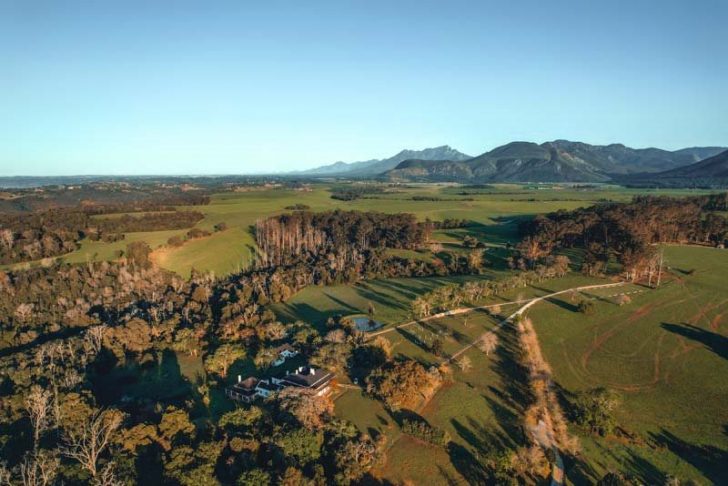The South African rock shelter of Oakhurst, located on South Africa’s southern coast, is a remarkable window into human history. Set into a sandstone cliff above a serene stream near the town of George, this shelter, shaded by towering yellowwood trees, has kept its secrets well. Archaeologists began exploring this site in the 1930s and found more than just rock art and ancient tools. They uncovered evidence of continuous human occupation stretching back 12,000 years.
For decades, researchers have been fascinated by the 46 human remains discovered at Oakhurst. A rare find in a region where burials from that era usually involve only single individuals.
However, what is exciting about the Oakhurst Rock Shelter today is how new technology is breathing life into old discoveries. Archaeogenetics, the study of ancient genomes, has enabled scientists to extract and analyze DNA from the remains found at the site.

History Geeks / At Oakhurst, a dedicated team of researchers recently pieced together 13 ancient genomes from the remains found there. It offers an unprecedented glimpse into the lives of South Africans from over 10,000 years ago.
This study reveals how the people of Oakhurst lived, moved, and mingled over thousands of years. The latest findings from this rock shelter are helping us rewrite parts of humanity's story.
What Does the South African Rock Shelter Reveal?
Understanding DNA is like holding a blueprint of life. In humans, our DNA is a treasure trove of information about our ancestors and their journeys. By examining genomes - long strands of genetic material - we can trace who lived in a particular region, how they migrated, and how different groups interacted over time. So, for archaeologists, DNA is the ultimate detective tool.
Among the 13 genomes, the oldest belonged to two individuals who lived around 10,000 years ago. This is a groundbreaking discovery, marking the oldest ancient DNA from South Africa yet analyzed. These ancient people left no written records, but their DNA tells a story of resilience and continuity.
The Oakhurst Rock Shelter reveals that for thousands of years, there was no massive influx or replacement of populations here. Instead, the genetic evidence suggests a remarkably stable community. One where cultural changes and human interaction occurred gradually and with profound continuity.
The Secret of Genetic Continuity at the South African Rock Shelter

Telly / The DNA of the individual from 1,300 years ago bears a strong resemblance to those from thousands of years prior. Thus, this consistent genetic identity indicates that these ancient people maintained their unique heritage even amid the changes brought by new neighbors.
Unlike many parts of the world where human populations arrived, mixed, and often replaced each other, the South African rock shelter at Oakhurst tells a different story. The DNA analysis shows that people in southernmost Africa experienced very little genetic change for thousands of years.
From 10,000 years ago until as recently as 1,300 years ago, the DNA profiles of Oakhurst’s inhabitants remained strikingly similar. This points to a level of genetic continuity that is rare, especially when compared to Europe, Asia, or the Americas, where waves of migration frequently introduced new genes and new faces.
However, it was not until around 2,000 years ago that newcomers began arriving in the region. These were herders, farmers, and speakers of different languages. They brought fresh skills, tools, and practices to the area, mixing with the local hunter-gatherers. Yet even then, the individuals who lived in the Oakhurst rock shelter retained a close genetic connection to their ancient predecessors.
Sure, archaeogenetics is an evolving field, but its impact on our understanding of human history is already profound. The Oakhurst site exemplifies how this technology can be applied to unlock secrets that have been hidden for millennia. Thus, by reconstructing the genomes of the rock shelter’s ancient inhabitants, scientists have effectively created a timeline that traces the cultural and genetic evolution of this community.



